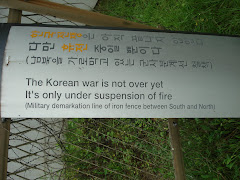Wednesday, May 7, 2014
Peace: let it begin with me
Kookaburra song, scent of eucalyptus, profusion of orchids: back in Australia. New South Wales, or at least the area around the friary in Stroud, is beautiful.
Br. Raphael Suh SSF and I traveled across the Tasman Sea from New Zealand on Monday, Cinco de Mayo.
Chapter in New Zealand April 25-28 was a good time for re-connecting and enjoying time together as well as the usual work of such meetings. We shook off the cobwebs of Chapter with a visit to Yarndley's Bush (one of the largest remaining kahikata [trees] stands on the North Island of New Zealand). It reminded me of walking among the redwoods in northern California. Then, we took a brisk hike through part of Pirongia Forest. I loved the giant ferntrees and different kinds of bird calls.
A highlight of my time in Hamilton, NZ, was an art exhibit presented by Anglican Action. Anglican Action is the Anglican Diocese of Waikato's social service "umbrella" agency--nothing to do with the conservative Anglican Church of North America which also uses "Anglican Action." Under this agency's aegis are groups serving women, youth, the elderly; they provide counseling, jobs and food among much else.The missioner, Karen Morrison-Hume, after a visit to a cathedral and noting all the plaques to the war dead decided that Anglican Action needed to honor the peace dead. Artist Maree Aldridge created an extraordinary exhibit in honor of New Zealander Archibald Baxter (1881-1970). As a committed pacifist from age 19, Baxter was nevertheless conscripted during WWI and shipped to Europe. There he refused to cooperate and was subjected by the New Zealand military leaders to "Field Punishment Number 1." Essentially a nail-less crucifixion, Baxter was tied to a pole with his feet just off the ground and left to hang by his arms for many days. The diabolical imagination of these officers in subjecting Baxter to this punishment for "fighting for a war-less world" and attempting to "treat other people as one would wish to be treated" is sickening. But it is not far fetched when one considers the vitriol directed at pacifists throughout history. The story of
Baxter's pacifism is a huge encouragement to be true to Gospel values and a condemnation of militarism.
For now, we are settling into the rhythms of life at our hermitage at Stroud. With my imagination fired by Baxter, I am fanning the flames for living Gospel values on a domestic front for now: praying together, eating together, working together. Yesterday the three of us brothers cut saplings and grubbed out the stumps with mattocks and pulaskis. Then I roasted some chicken, sauteed pumpkin and cabbage for an autmnal dinner.
How sweet it is when we live together in unity. How great the obligation to grub out noxious growth of invasive species and armies.
Br. Raphael Suh SSF and I traveled across the Tasman Sea from New Zealand on Monday, Cinco de Mayo.
Chapter in New Zealand April 25-28 was a good time for re-connecting and enjoying time together as well as the usual work of such meetings. We shook off the cobwebs of Chapter with a visit to Yarndley's Bush (one of the largest remaining kahikata [trees] stands on the North Island of New Zealand). It reminded me of walking among the redwoods in northern California. Then, we took a brisk hike through part of Pirongia Forest. I loved the giant ferntrees and different kinds of bird calls.
A highlight of my time in Hamilton, NZ, was an art exhibit presented by Anglican Action. Anglican Action is the Anglican Diocese of Waikato's social service "umbrella" agency--nothing to do with the conservative Anglican Church of North America which also uses "Anglican Action." Under this agency's aegis are groups serving women, youth, the elderly; they provide counseling, jobs and food among much else.The missioner, Karen Morrison-Hume, after a visit to a cathedral and noting all the plaques to the war dead decided that Anglican Action needed to honor the peace dead. Artist Maree Aldridge created an extraordinary exhibit in honor of New Zealander Archibald Baxter (1881-1970). As a committed pacifist from age 19, Baxter was nevertheless conscripted during WWI and shipped to Europe. There he refused to cooperate and was subjected by the New Zealand military leaders to "Field Punishment Number 1." Essentially a nail-less crucifixion, Baxter was tied to a pole with his feet just off the ground and left to hang by his arms for many days. The diabolical imagination of these officers in subjecting Baxter to this punishment for "fighting for a war-less world" and attempting to "treat other people as one would wish to be treated" is sickening. But it is not far fetched when one considers the vitriol directed at pacifists throughout history. The story of
Baxter's pacifism is a huge encouragement to be true to Gospel values and a condemnation of militarism.
For now, we are settling into the rhythms of life at our hermitage at Stroud. With my imagination fired by Baxter, I am fanning the flames for living Gospel values on a domestic front for now: praying together, eating together, working together. Yesterday the three of us brothers cut saplings and grubbed out the stumps with mattocks and pulaskis. Then I roasted some chicken, sauteed pumpkin and cabbage for an autmnal dinner.
How sweet it is when we live together in unity. How great the obligation to grub out noxious growth of invasive species and armies.
Subscribe to:
Comments (Atom)





